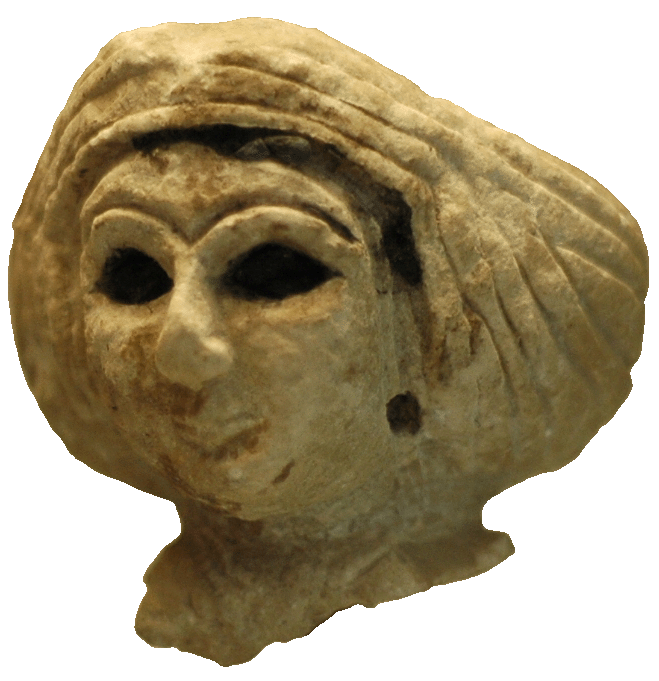Ka'ba-ye zartosht
- Ka'ba-ye zartosht
-
Ka'ba-ye Zartosht
Ka'ba-ye Zartosht (en persan : کعبه زرتشت, la Ka'ba de Zoroastre), est un monument religieux achéménide, situé dans le site archéologique de Naqsh-e Rostam, qui remonterait à 2400 ans. Il est situé à proximité de la ville de Shiraz, la capitale de la province du Fars, en Iran. C'est une tour en pierre qui faisait partie d'un ensemble plus vaste en brique crue, aujourd'hui disparu.
Édifié au Ve ou au IVe siècle av. J.-C. au pied d'une falaise sacrée, ce temple est demeuré en fonction au moins jusqu'au IIIe siècle de notre ère, peut-être même jusqu'à l'islamisation de la Perse. Vers 270 le roi sassanide Shapur Ier a fait graver sur un de ses murs une inscription trilingue (grec, pehlevi parthe, pehlevi sassanide) résumant les hauts-faits de son règne, qu'on appelle les Res Gestae Divi Saporis.
Bibliographie
 Portail de l’archéologie
Portail de l’archéologie Portail de l’Iran
Portail de l’Iran
Catégories : Site archéologique d'Iran | Empire achéménide
Wikimedia Foundation.
2010.
Contenu soumis à la licence CC-BY-SA. Source : Article Ka'ba-ye zartosht de Wikipédia en français (auteurs)
Regardez d'autres dictionnaires:
Zartosht Bahram e Pazhdo — was a significant Persian Zoroastrian poet and the son of Bahram e Pazhdo. He was born in the early or mid 13th century. Life and place of Birth Zartosht was born somewhere during the Khwarzmian Shah era and witnessed the Mongol invasion of Pers … Wikipedia
Zartosht No-Diso — Zartosht no diso, or Zarthost no deeso, is a major holiday of the Zoroastrian religion. It is a commemoration of the Prophet Zarathushtra s death anniversary, and is observed on the 11th day (Khorshed) of the 10th month (Dae). In the seasonal… … Wikipedia
Ka'ba-ye Zartosht — Cube of Zoroaster (Ka ba ye Zartosht) … Wikipedia
Ka'ba-i-Zartosht — El Ka ba i Zartosht (en persa کعبه زرتشتalt: Kaba i Zardusht, Kaba ye Zardosht), que significa el Cubo de Zoroastro , es un edifico de época aqueménida del siglo V a. C. en Naqsh e Rostam, un sitio arqueológico justo al noroeste de… … Wikipedia Español
Ka'ba-Ye Zartosht — Pour les articles homonymes, voir Ka ba (homonymie). Ka ba Zoroastrienne. Ka ba ye Zartosht (en … Wikipédia en Français
Ka'ba-ye Zartosht — source:enwiki 29° 59′ 18″ N 52° 52′ 26″ E / 29.98844, 52.87395 … Wikipédia en Français
Naqsh-e Rustam — Coordinates: 29°59′20″N 52°52′29″E / 29.98889°N 52.87472°E / 29.98889; 52.87472 Further information: Achaemenid architecture … Wikipedia
Kartir — Hangirpe (alternatively, Karder or Kirdir) was a highly influential Zoroastrian high priest of the late 3rd century CE and served as advisor to at least three Sassanid emperors. Kartir was probably instrumental in promoting the cause of Mazdaism… … Wikipedia
Bahram-e-Pazhdo — Bahram e Pazhdo, meaning Bahram (son) of Pazhdo, was a Zoroastrian and Persian poet of the 13th century.Bahram e Pazhdo s only surviving work is his Bahariyyat Spring , a 330 couplet composition, in hazaj meter, that dates to 1257. The poem… … Wikipedia
Naghsh-e Rostam — Naqsh e Rostam Naqsh e Rostam (en persan : نقش رستم, Naqš e Rostam) est un site archéologique situé à environ 5 km au nord ouest de Persépolis, dans la province du Fars en Iran[1]. Cet endroit est appelé Næqš e Rostæm le portrait de Rostam… … Wikipédia en Français

